The Treasures of Vienna
The greatest Roman cameo, a shady Titian, a sexy Tintoretto, and some dubious life advice from my father.
Last week, I was in Vienna. I’d been filming a show about some of the ancient world’s more nefarious characters (more on this in due course) just over the border in Slovakia and I decided to stay on in the city a few days before forcing myself back to London.
I had always associated Vienna with the art of the early twentieth-century: Gustav Klimt and Egon Schiele, the Secession and the Wiener Werkstätte. But Vienna — having been the capital of a rich, productive, and grasping imperial power (just like us!) for half a millennium — also managed to acquire some of the greatest masterpieces of ancient and Renaissance art ever produced.
These are three of the most interesting, and most beautiful, things I saw.
The Gemma Augustea
This ancient Roman cameo was cut from a single piece of Arabian onyx the size of a sheet of paper. On the upper register, members of the Julio-Claudian imperial family mingle with the gods; on the lower, a Roman soldier raises a battle-field trophy above the heads of bound nondescriptly-northern barbarians.
It is extremely beautiful. The Kunsthistorisches Museum have set it on its own wall in a darkened room. And just as the master gem-cutter no-doubt intended, the figures — semi-translucent in places — seem to glow.
Probably carved as a gift for a member of the imperial family’s inner circle, we might read it like a Romanov Faberge egg: glistening, personal, decadently pointless.
There is a great deal about the Gemma Augustea on which scholars can’t agree — the date of its creation, the identity of specific figures — but it is clear that this is a statement of imperial and autocratic intent, no matter how delicately it is carved.
Enthroned at the centre is Rome’s first emperor, Augustus, dressed as Jupiter and surrounded, groupie-like, by deified personifications: Rome, the land of Italy, the Ocean, the known-world. His star-sign, Capricorn, hovers above his head; an eagle almost cowers at his feet.
One young prince stands battle-ready nearby, and another — almost certainly Augustus’ successor Tiberius — steps down from a chariot driven by the winged-goddess Victory.
Everyone in the upper register — even the eagle — looks towards Augustus.
The message is clear. Augustus has brought peace to land and sea; prosperity to Italy (two children hang off the cornucopia-bearing personification of Tellus-Italia); and glory to Rome. Power derives from him, and the continuation of his dynasty is both divinely-favoured and set in motion.
All this rests, quite literally, on what is going on in the lower register: the subjugation of barbarian peoples, the expansion of the empire, and the triumph of Rome.
Due to my patchy revision practises, the Gemma Augustea was forced to do a lot of heavy lifting as a piece of evidence in my undergraduate finals, but I chose well — it is one of the most perfect and succinct summaries of Julio-Claudian ideology ever created.
Titian’s Portrait of Jacopo Strada
God, don’t you just love how bad he looks.
The subject of this portrait — perhaps Titian’s last — is Jacopo Strada.
Born into an inconsequential family in the Northern Italian city of Mantua and trained as a goldsmith, Strada died an art-world king — dealer of choice to German princes, nouveaux plutocrats, and Holy Roman Emperors.
This portrait was painted in Venice in 1567/8, when Strada was in town trying (illegally) to acquire the famed collection of Gabriele Vendramin. Although Titian had generally given up portraiture by this stage in his career, he painted Strada and he did it for free.
The question of what he thought of his sitter has obsessed observers ever since the weaselly Nicolo Stopio — a small-time competitor and avowed enemy of Strada’s — claimed to have heard from a friend that Titian thought Strada a ‘pompous idiot’ whose devious charm only worked on unworldly Germans.
This gossip has coloured many modern readings of the portrait; some even contend that Titian carefully designed the portrait to display his loathing of its subject. Certainly, Strada has none of the dignified poise Titian confers on most of his subjects. He does, however, have energy.
To stand in front of the portrait is to feel that Strada might tear from the canvas, grab you by the shoulder, show you this small marble Venus, then a painting, then another statue, call for some drinks, convince you of the works’ importance, close the deal, and turn you out onto the street thoroughly bankrupt.
A month after he wrote the letter quoted above, Stopio, now desperate to run his rival out of town, tried a different tack.
“Strada is not suitable to negotiate here [in Venice], because he is too presumptuous and choleric. He immediately wants to pronounce a judgment in his own way, will sustain it [against all others], and then departs in a huff.”
It is hard to imagine that Strada would have found this criticism as damning as Stopio intended it to be. The energy decried by Stopio — intense, assertive, perhaps bulldozing — had made Strada’s career. And it is that same energy that steams off Titian’s canvas.
Bad, perhaps, but also so, so good.
Tintoretto’s Susanna and the Elders
I love Tintoretto.
His compositions tip-forward. Stand in front of one of his paintings and you feel off-balance, like you’re hurtling into the action from above. He works in long, swooping brushstrokes; leaving some passages only sketched; highlighting flashing silk, jewels, or skin with slashes of pure white. And then his figures — for all their mad vitality, they often have this otherworldly back-lit glow, as though they’re something between a vision and flesh.
Vasari — the first art-historian and a Florentine obsessed with the grand precision of Michelangelo — could neither bring himself to laud Tintoretto’s madness, nor to deny his talent. Calling his painting ‘swift, resolute, fantastic, and extravagant’, Vasari saw in Tintoretto ‘the most extraordinary brain that the art of painting has ever produced’. The ‘strange vagaries’ of this brain gave rise to original, fantastical, furious compositions, but Tintoretto, Vasari thought, worked haphazardly, sketching with his paints ‘as if to prove that art is but a jest’.
The Susanna and the Elders in the Kunsthistorisches Museum is one of Tintoretto’s less maddened, more polished paintings — but his take on this old theme is none the less characteristically new. Tintoretto weaves together two incompatible moods: the calm grandeur of Susanna’s reverie, intruded on by the farcical contortions of the elders. You can just sniff the first strains of desperation coming through the perfume.
He varies his brushwork too. Susanna’s body is smooth perfection; her clothes, jewels, and tools of beautification are raised in artificial impasto. Beyond her corner, things become looser and more febrile: the garden is lightly drawn in its hot evening haze; the elders, twisting hungrily, come to life in fewer, faster strokes.
Tintoretto may, as Vasari claimed, have ‘dashed his work off by mere skill of hand’, but what a hand.
If you have Viennese favourites of your own, please, please let me know in the comments!
More things I adored in the Kunsthistorisches Museum…
This c. 1506 Lorenzo Lotto portrait of an unidentified young man.
This strange c. 1538-1540 winged altarpiece. Produced before the German reformation picked up iconoclastic zeal, it includes more images than any other contemporary German artwork; combining pictures of bible-stories — almost comic-book style — with chunks of explanatory text.
I also loved how they displayed their Greek vases and Roman portrait-heads on masse.
Like the family china.
Or an unimpressed audience of decapitated marble heads.
Ok, that concludes the portion of this post in which I write about things I know anything about. Below are my personal and biased recommendations.
Stay: Hotel Imperial.
This was where the Führer stayed when he was in town. When I was young my (Jewish) father told me that in any great European capital you should always, if you can afford it, stay in the first hotel to have been commandeered by the invading high command.
And he’s right!
The Imperial has a palatial staircase of inlaid marble, a cafe filled with impeccably dressed Viennese elders, and rooms lined with watered-silk.
Read: Dream Story by Arthur Schnitzler.
The early-twentieth century novella on which Eyes Wide Shut (a film I am shamefully yet to see) was based, Dream Story takes place over two nights in the Austrian capital.
Set in the final days of the Austro-Hungarian empire, this Vienna is all bourgeois convention by day; all secret invites, dark costume-stores, and anonymous countesses by night. Its sexy and weird and unsettling. And its only ninety-nine pages.
And if you walk past it, slip into the Augustinerkirche. I was sitting in a pew, looking up at this ceiling…
And then I turned to my right and saw a monumental tomb by Canova. Just there.
If you have Vienna recommendations let me know in the comments — I’m planning a return…

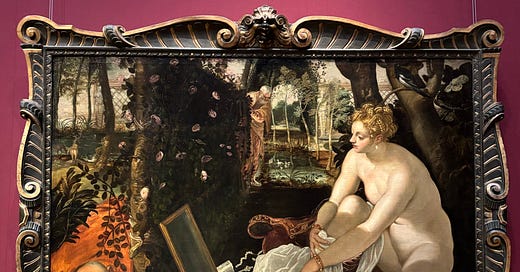


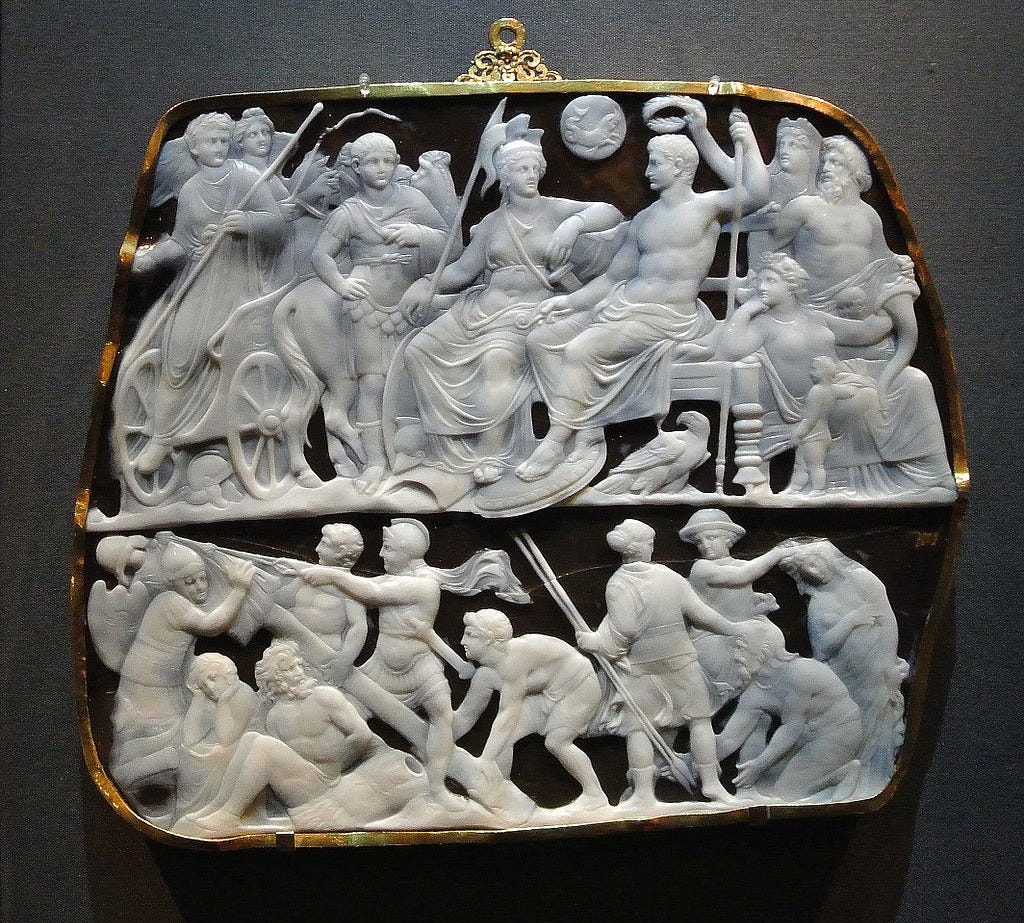
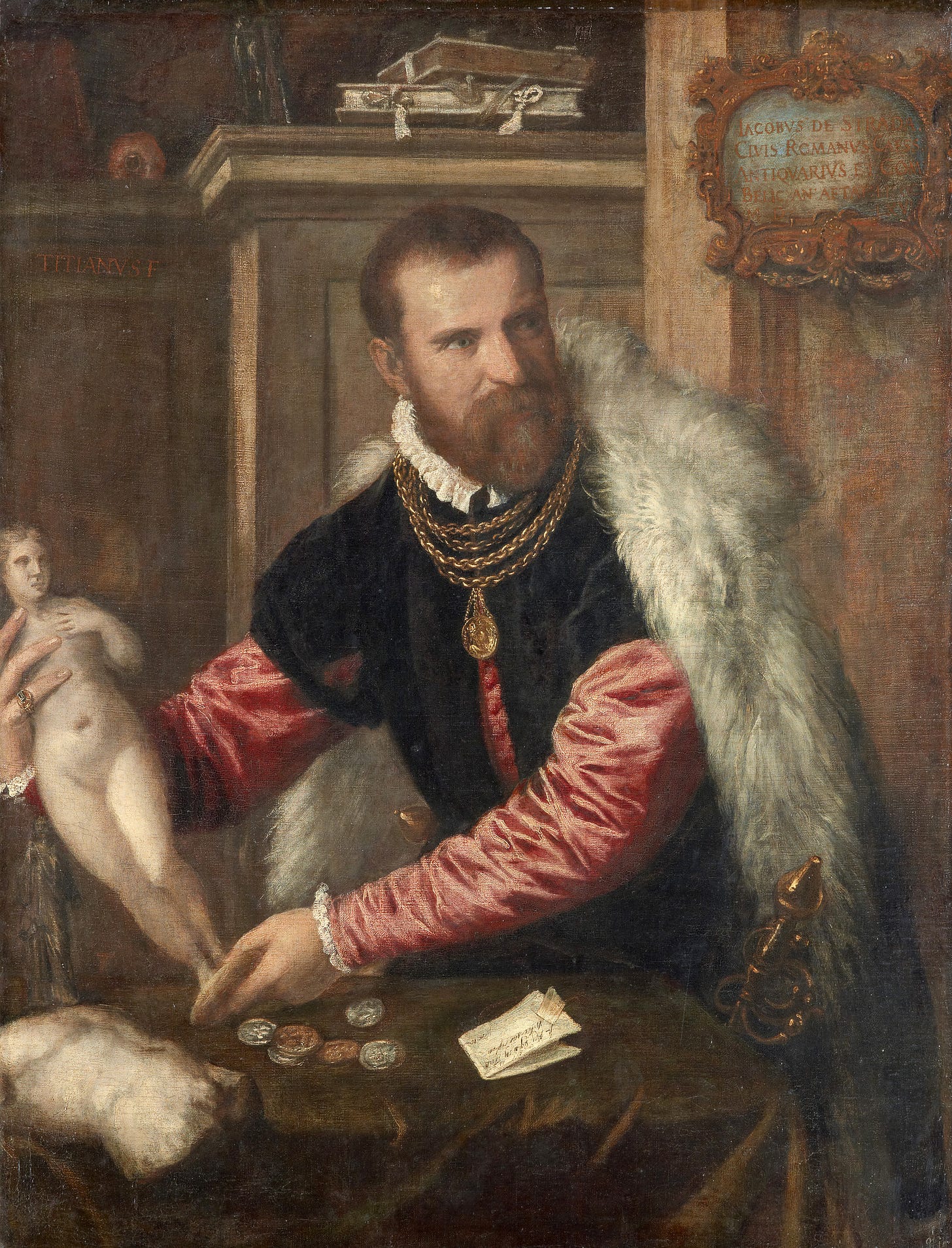


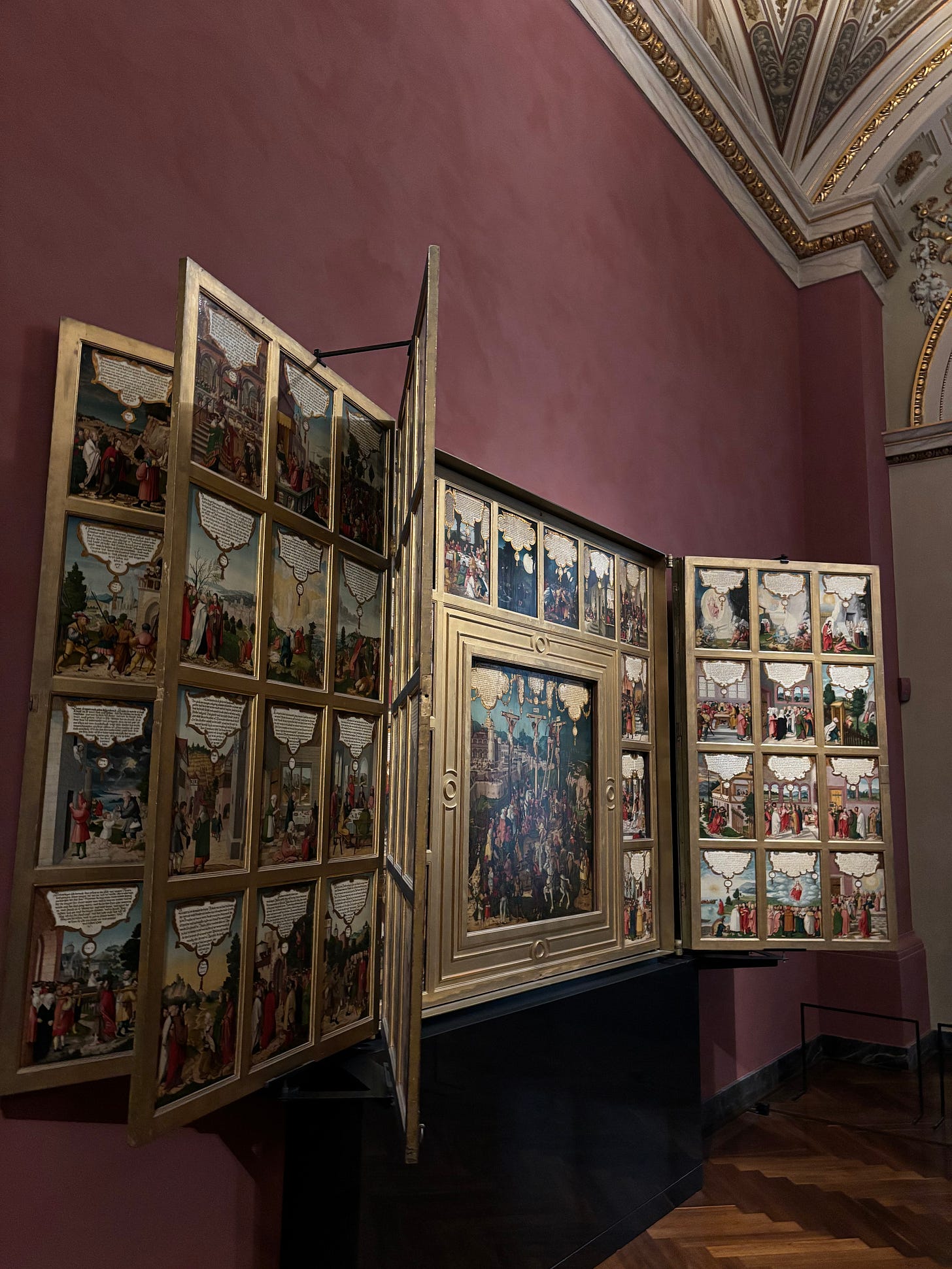


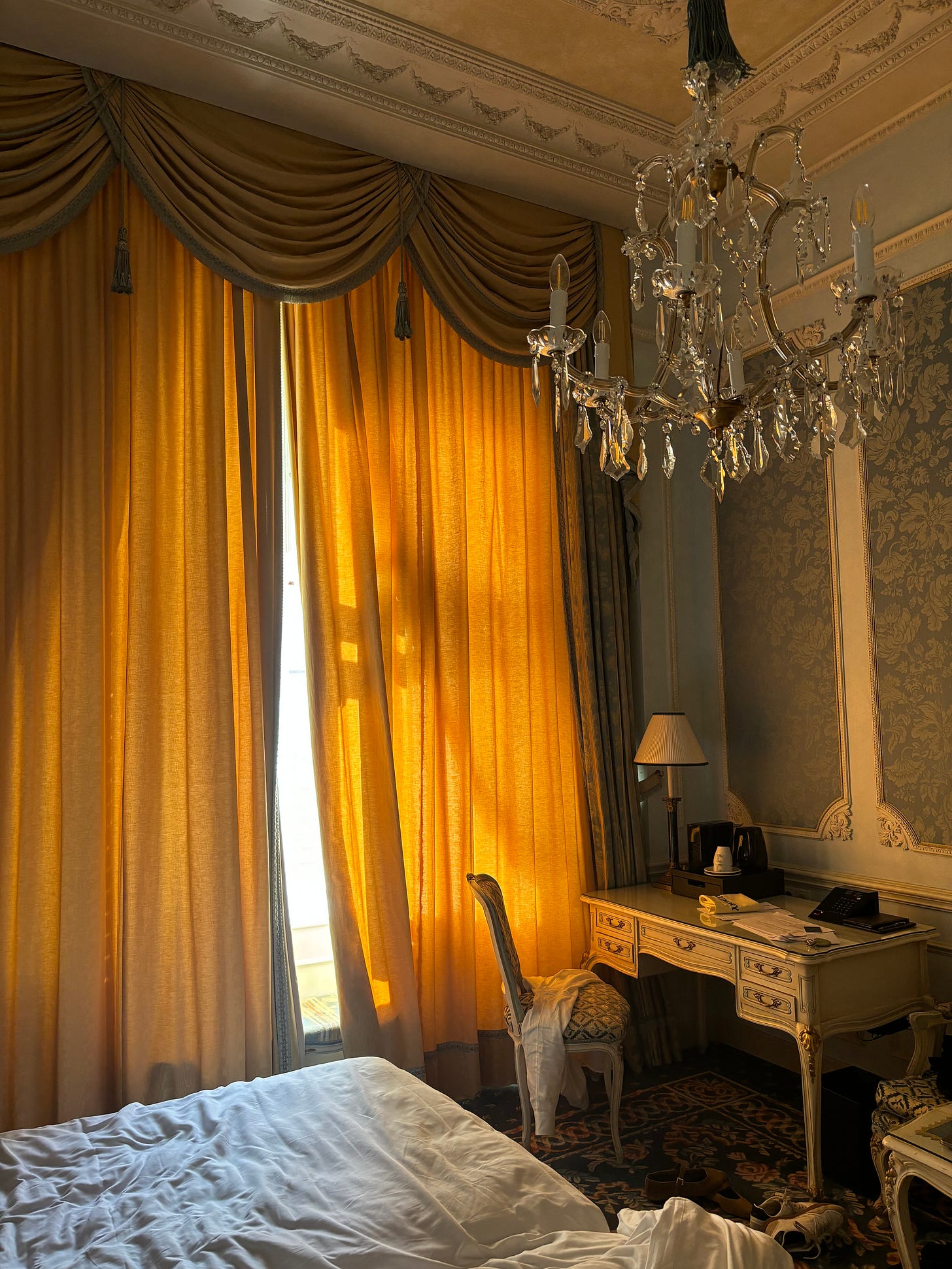
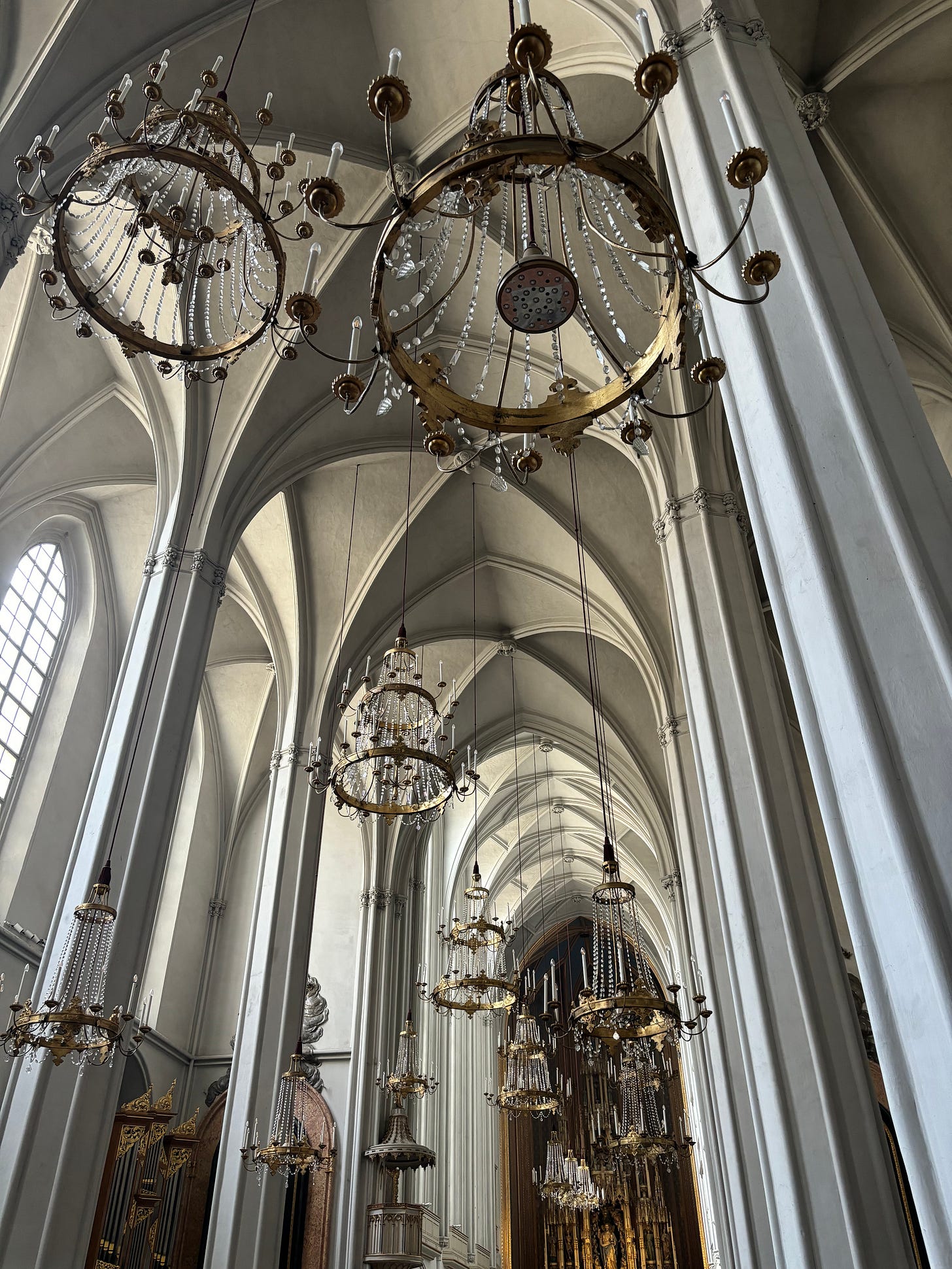

I never realized Vienna had so many treasures! I love the way you write about these works, it makes them so electric and alive! Pieces like the Gemma Augustea I would often marvel at but not understand the context. The way you walk us through the narrative and the motivations behind it are so valuable.
Why is it, Honor, that good girls like you always go for bad boys like Jacopo Strada? I know, it was ever thus. My main recommendation for Vienna is the State Opera House. Even if your visit doesn't coincide with a production, it's worth a visit just for the guided tour of the building itself.